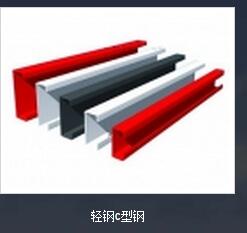焊接方管加工过程中有很多过程,每一个细节都是我们需要注意的,大家可以了解一下有关于高频焊接方管在加工过程中热处理如下:
There are many processes in the processing of welded square tubes, and every detail we need to pay attention to. You can learn about the heat treatment of high-frequency welded square tubes during the processing as follows:
无锡方管在应用之前是需要经过各个流程的加工的,方管的热处理是焊接钢管加工中很重要的一个环节。热加工首先是将金属材料放在一定的介质内加热、保温、冷却,通过改变材料表面或内部的金相组织结构,来控制其金属性能的一种金属热加工工艺。结构高频焊管工件在加热和冷却过程中,由于表层和心部的冷却速度和时间的不一致,形成温差,就会导致体积膨胀和收缩不均而产生应力,即热应力。
Before application, Wuxi square pipes need to go through various processes of processing, and the heat treatment of square pipes is a very important link in the processing of welded steel pipes. Hot working is a metal hot working process that first heats, insulates, and cools metal materials in a certain medium, and controls their metal properties by changing the surface or internal microstructure of the material. During the heating and cooling process of structural high-frequency welded pipe workpieces, due to the inconsistent cooling speed and time between the surface and core, a temperature difference is formed, which can lead to uneven volume expansion and contraction, resulting in stress, namely thermal stress.

在热应力的作用下,由于表层开始温度低于心部,收缩也大于心部而使心部受拉,当冷却结束时,由于心部冷却体积收缩不能自由进行而使表层受压心部受拉。即在热应力的作用下使工件表层受压而心部受拉。
Under the action of thermal stress, due to the initial temperature of the surface being lower than the center and the shrinkage being greater than the center, the center is subjected to tension. When the cooling is completed, the surface is compressed and the center is subjected to tension due to the inability of the volume contraction of the core to cool freely. Under the action of thermal stress, the surface of the workpiece is compressed while the center is pulled.
这种现象受到冷却速度,材料成分和热处理工艺等因素的影响。 当冷却速度愈快,含碳量和合金成分愈高,冷却过程中在热应力作用下产生的不均匀塑性变形愈大,形成的残余应力就愈大。另一方面钢在热处理过程中由于组织的变化即奥氏体向马氏体转变时,因比容的增大会伴随工件体积的膨胀,工件各部位先后相变,造成体积长大不一致而产生组织应力。
This phenomenon is influenced by factors such as cooling rate, material composition, and heat treatment process. The faster the cooling rate, the higher the carbon content and alloy composition, and the greater the uneven plastic deformation generated under thermal stress during the cooling process, resulting in greater residual stress. On the other hand, during the heat treatment process of steel, due to the change in microstructure, i.e. the transformation from austenite to martensite, the increase in specific volume will be accompanied by the expansion of the workpiece volume, and various parts of the workpiece will undergo phase transformation, resulting in inconsistent volume growth and generating structural stress.
组织应力变化的结果是表层受拉应力,心部受压应力,恰好与热应力相反。组织应力的大小与工件在马氏体相变区的冷却速度,形状,材料的化学成分等因素有关。
The result of changes in organizational stress is tensile stress on the surface and compressive stress on the core, which is exactly the opposite of thermal stress. The magnitude of organizational stress is related to factors such as the cooling rate, shape, and chemical composition of the material in the martensitic transformation zone of the workpiece.
